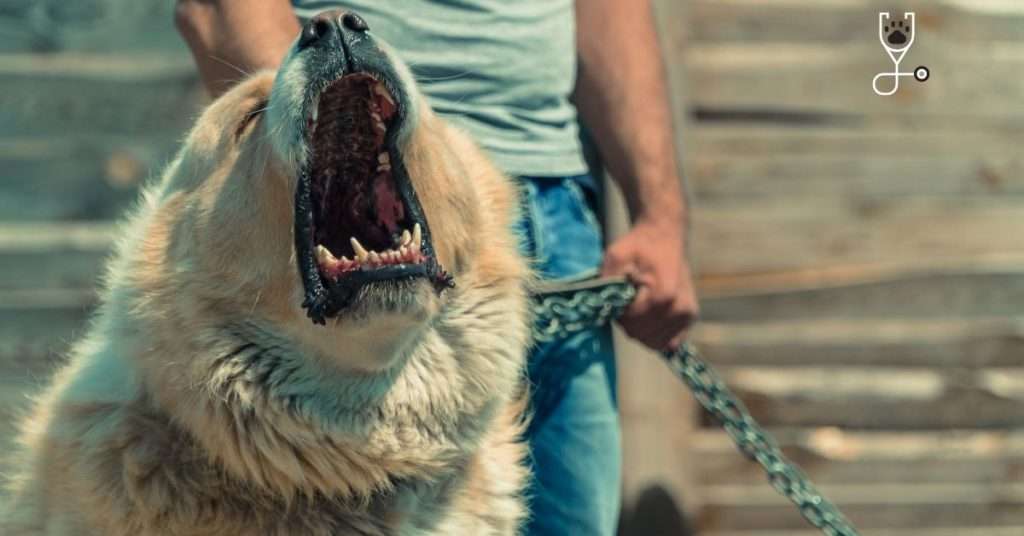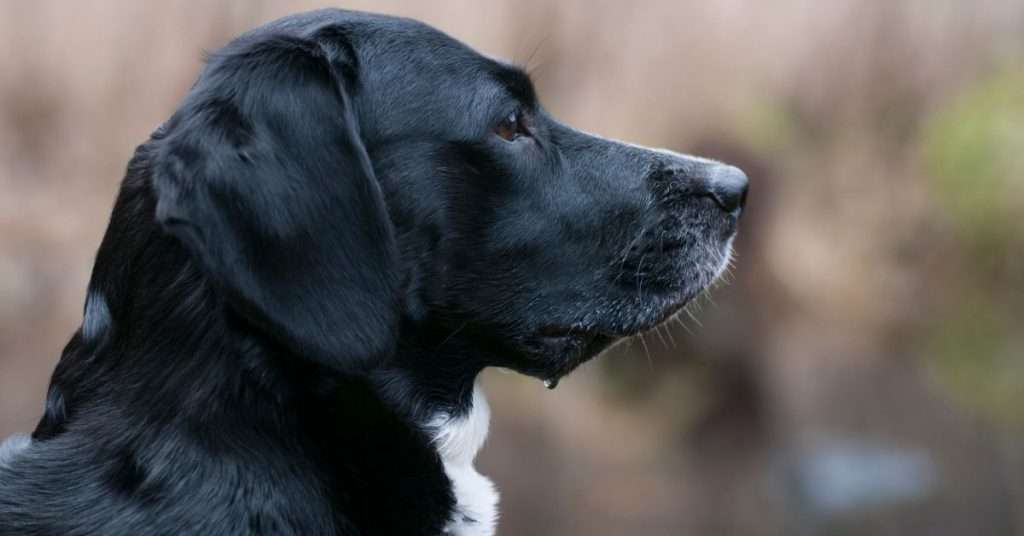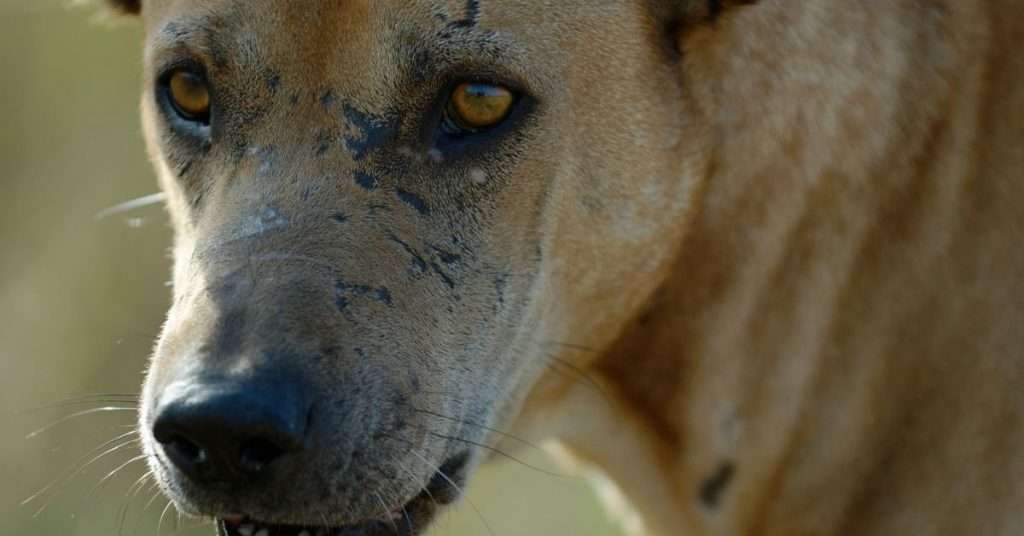If you’ve ever had a dog, chances are you’ve experienced resource guarding. Whether it’s your dinner, your bed, or your favorite toy, dogs have been known to become territorial over prized possessions. But what exactly is resource guarding, and why do dogs do it? New research sheds light on the motivations behind this behavior. Let’s take a closer look!

What Is Resource Guarding?
Resource guarding is a behavior that occurs when an animal feels the need to protect a valuable resource, such as food, water, or shelter. This behavior is often seen in dogs, but can also be seen in other animals, such as chimpanzees and lions.
There are two types of resource guarding:
- Active
- Passive
Active resource guarding is when the animal actively tries to keep others away from the resource, through means such as growling, barking, or biting.
Passive resource guarding is when the animal does not actively try to keep others away, but instead simply blocks access to the resource.
Learn More: What Are Service Dogs? Breeds and Duties of These Fantastic Dogs
Guarding Types Terminology
Guarding in dogs is a behavior that has been referred to by many different names, including “possessive aggression,” “food-related aggression,” “object guarding,” or “material protective.” It is also sometimes called “location guarding” or “owner guarding.”
Let’s discuss in deep how it’s happening
Possessive aggression: Possessive aggression is a type of resource guarding in which the dog actively tries to keep others away from the resource. This can be done through means such as growling, barking, or biting. Possessive aggression is often seen in dogs who are guarding food, toys, or other objects.
Food-related aggression: Food-related aggression is another type of resource guarding in which the dog becomes aggressive when someone tries to take away their food. This can be a problem if the dog is not well-socialized and does not know how to share food with others.
Object guarding: Object guarding is when the dog becomes aggressive when someone tries to take away an object that they are guarding. This can be a problem if the dog is guarding a toy or other object that someone else wants to use.
Material protective: Material protective is when the dog becomes aggressive when someone tries to take away an object that they are guarding. This can be a problem if the dog is guarding a valuable object, such as a piece of jewelry or a wallet.
Location guarding: Location guarding is when the dog becomes aggressive when someone tries to take them away from a location that they are guarding. This can be a problem if the dog is guarding a person, such as their owner, or a place, such as their bed.
Owner guarding: Owner guarding is when the dog becomes aggressive when someone tries to take their owner away from them. This can be a problem if the dog is guarding their owner from someone who is trying to help them, such as a doctor or a police officer.

Resource Guarding Wins the Day
Dog behavior experts have long debated the best term to use to describe a dog’s tendency to guard things. Some experts believe that the term “possessive aggression” is more accurate, while others argue that the term “resource guarding” is more precise.
In a recent survey of dog behavior experts, most respondents agreed that the term “resource guarding” is the more accurate of the two. Resource guarding is a dog’s natural instinct to protect something that they perceive as valuable, such as food or toys. Possessive aggression, on the other hand, is a learned behavior that is often the result of insecurity or mistrust.
While both terms are used to describe similar behaviors, resource guarding is the more accurate term and should be used when discussing this topic.
Read More: Benefits of Duck Feet for Dogs: Natural Dog Treats
Signs of Resource Guarding in Dogs
There are a number of signs that may indicate that your dog is resource guarding. If you see any of the following behaviors, it is important to seek professional help from a certified animal behaviorist or dog trainer:

- Your dog growls, snaps, or bites when someone tries to take away their food or toy.
- Your dog growls, snaps, or bites when someone tries to pet them while they are eating.
- Your dog growls, snaps, or bites when someone tries to take them away from their bed or favorite spot.
- Your dog growls, snaps, or bites when someone tries to touch them while they are sleeping.
- Your dog growls, snaps, or bites when someone tries to take away their bone or another favorite chew toy.
- Your dog growls, snaps, or bites when someone tries to take them away from their owner.
- Your dog growls, snaps, or bites when someone tries to approach them while they are in their crate.
If you see any of these behaviors, it is important to seek professional help right away. Resource guarding can be a serious problem and can lead to aggression if not treated properly.
Learn More: How to Make Homemade Dog Food: 5 Important Guidelines
How to Prevent Resource Guarding
One of the best ways to prevent resource guarding is to socialize your dog at an early age. It is important that your dog learn how to share resources with other dogs and people. This can be done by exposing them to different environments and situations in a positive and controlled way.
Another way to prevent resource guarding is to never punish your dog for growling or snapping. This will only make the problem worse and could lead to aggression. If your dog growls or snaps, simply remove the resource that they are guarding and put it away. This will teach them that growling or snapping does not get them what they want.
If you think your dog may be resource guarding, it is important to seek professional help right away. A certified animal behaviorist or dog trainer can help you identify the root of the problem and develop a plan to address it. With proper training and management, resource guarding can be prevented or resolved.
All About Dogs In Our Detailed Guide Here: The Ultimate Guide To Dogs Behavior